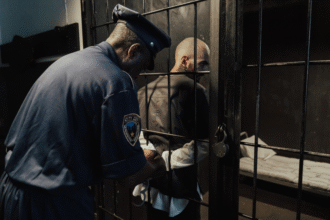The pressures in accident-and-emergency (A&E) units across the UK are as severe as during the Covid pandemic, according to NHS leaders. With flu cases on the rise and cold weather intensifying, hospitals are facing “exceptional pressure” and experiencing “mammoth demand.” Some NHS staff have expressed that the strain they’re enduring feels similar to the peak days of the pandemic. This NHS crisis has left the healthcare system grappling to manage the immense number of patients flooding in.
Why is the NHS facing such immense pressure?
Flu cases have continued to increase, with more than 5,400 patients a day being treated in English hospitals. This figure is about 1,000 higher than the week before. Approximately 20 NHS trusts in England have declared critical incidents this week, citing long delays in A&E services. Additionally, the Welsh Ambulance Service declared a critical incident last week, and hospitals in Scotland are reported to be “gridlocked.”
Sir Stephen Powis, NHS England’s medical director, highlighted the intensity of the situation: “It is hard to quantify how tough it is for front-line staff at the moment – with some staff working in A&E saying that their days at work feel like some of the days we had during the height of the pandemic.”
What is contributing to this crisis?
The rise in flu cases is one of the major contributors to the current NHS crisis, with cases now more than three times higher than this time last year. The surge in flu patients is on par with early 2023, one of the worst flu seasons in years. The combination of cold weather and an uptick in flu cases has made the start of 2025 especially brutal for NHS staff and patients alike.
Saffron Cordery, from NHS Providers, a health management organization, emphasized that “we’re not out of the woods yet,” and that “things are likely to get worse before they get better.” She also pointed to the immense strain on emergency services, with many patients facing long waits for ambulances and A&E treatment.
How are patients being affected by the crisis?
The impact on patients has been severe, with some sharing harrowing experiences. One woman described her elderly mother’s experience of spending more than 30 hours on a trolley in a hospital corridor after collapsing at a care home. “I’ve never experienced anything like that in my life,” she said. “It was like a Victorian workhouse. The nurses were saying how bad it is, and they were saying they just had to crack on with it.”
Another patient, Yvonne Wolstenholme, spent 13 hours in A&E after her GP sent her there due to breathing difficulties. She explained, “It was absolutely heaving. Staff are snowed under. They really are rushing around like headless chickens, and it’s not because of a lack of skill, it’s the lack of time to see individual patients.”
Wolstenholme also noted that while she was in A&E, there were at least eight ambulance crews waiting to hand over patients, leaving emergency responders unable to attend to calls out in the community.
What are the statistics telling us?
The official figures released on Thursday highlight the growing NHS crisis. In December, the average ambulance response time for immediately life-threatening category-one calls, such as cardiac arrests, was 8 minutes 40 seconds. The target for these calls is seven minutes. For category-two calls, including heart attacks and strokes, the response time was 47 minutes 26 seconds, well above the 18-minute target.
In A&E, only 71% of patients were seen, treated, or admitted within the target time of four hours. While there is some positive news on routine treatment, the hospital waiting list fell slightly to 7.48 million at the end of November, down from 7.54 million in October.
How are NHS workers coping with the workload?
Dr. Tim Cooksley, from the Society for Acute Medicine, described the situation as an “appalling” winter crisis. He painted a grim picture of the reality for both patients and staff: “The reality for patients and staff is corridors full of patients experiencing degrading care, being treated in the backs of ambulances because there is simply no space in hospital, and the immense physical and emotional harm that inevitably results.”
Dr. Cooksley also stressed that the fundamental issue is the ongoing lack of capacity throughout the year, asserting that a tough flu season should not be used as a political excuse for the ongoing NHS crisis.








